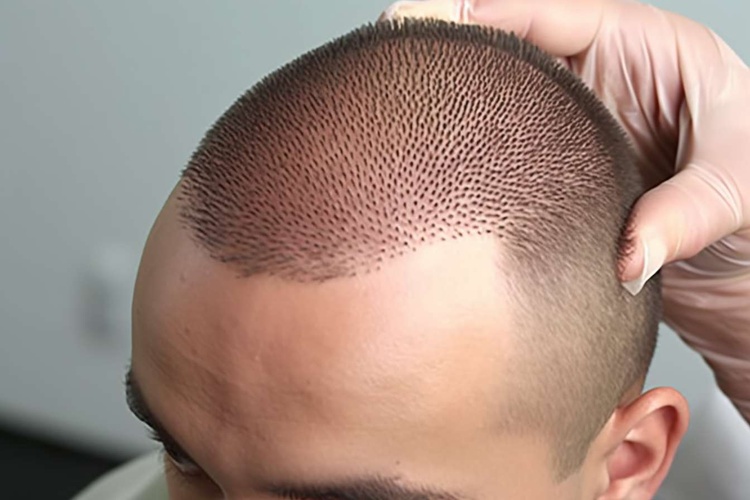Understanding Hair Restoration: Methods, Costs, and Options
Hair loss affects millions of people worldwide, prompting many to seek effective solutions for regaining their natural appearance and confidence. Hair restoration has evolved significantly over recent decades, offering various medical and cosmetic approaches tailored to individual needs. From surgical transplants to non-invasive therapies, understanding the available options, their effectiveness, and associated costs can help you make informed decisions about addressing hair thinning or baldness.

Hair loss can be a distressing experience, impacting self-esteem and quality of life across all age groups. Whether caused by genetics, hormonal changes, medical conditions, or lifestyle factors, the desire to restore hair has led to remarkable advances in treatment technologies. Modern hair restoration encompasses a wide range of procedures and therapies designed to stimulate growth, transplant healthy follicles, or improve scalp health. This article explores the key methods available today, what to expect from professional clinics, and the financial considerations involved.
What Is Hair Rejuvenation and How Does It Work?
Hair rejuvenation refers to non-surgical treatments aimed at revitalizing existing hair follicles and improving overall scalp health. These therapies often include platelet-rich plasma (PRP) injections, low-level laser therapy (LLLT), and specialized topical treatments. PRP involves drawing a small amount of blood, processing it to concentrate growth factors, and injecting it into the scalp to stimulate follicle activity. LLLT uses red light wavelengths to enhance cellular metabolism and promote hair growth. Many patients combine these approaches with medical-grade shampoos and supplements to maximize results. While outcomes vary, hair rejuvenation is particularly effective for those in early stages of thinning or as a complementary treatment following surgical procedures.
What to Expect from a Professional Hair Regrowth Clinic
Professional hair regrowth clinics offer comprehensive evaluations to determine the underlying causes of hair loss and recommend personalized treatment plans. Initial consultations typically involve scalp analysis, medical history review, and sometimes blood tests to identify hormonal imbalances or nutritional deficiencies. Experienced clinics employ board-certified dermatologists or hair restoration surgeons who stay current with the latest research and techniques. Treatment plans may include medications like minoxidil or finasteride, advanced therapies such as microneedling with growth serums, or surgical options. Reputable clinics provide realistic expectations, transparent pricing, and follow-up care to monitor progress and adjust treatments as needed.
The Role of a Medical Scalp Treatment Center
Medical scalp treatment centers specialize in diagnosing and treating scalp conditions that contribute to hair loss. These facilities address issues such as seborrheic dermatitis, psoriasis, folliculitis, and fungal infections that can damage hair follicles if left untreated. Treatment protocols often combine prescription medications, medicated shampoos, anti-inflammatory therapies, and lifestyle counseling. Some centers also offer scalp biopsies to accurately diagnose rare or complex conditions. By focusing on scalp health as the foundation for hair growth, these centers provide essential care that complements other restoration efforts. Patients with persistent scalp discomfort, inflammation, or unexplained hair loss should consider consultation with a medical scalp treatment specialist.
Choosing a Medical Hair Restoration Clinic
Medical hair restoration clinics provide both surgical and non-surgical solutions under the guidance of trained medical professionals. The most common surgical procedure is follicular unit extraction (FUE), where individual hair follicles are harvested from donor areas and transplanted to thinning or balding regions. Another technique, follicular unit transplantation (FUT), involves removing a strip of scalp and dissecting it into grafts. Modern clinics use advanced tools and techniques to minimize scarring and maximize natural-looking results. When selecting a clinic, research the credentials of the medical team, review before-and-after photos of previous patients, read independent reviews, and ensure the facility follows strict hygiene and safety protocols. A trustworthy clinic will offer detailed consultations without pressuring you into immediate decisions.
Understanding Advanced Hair Restoration Cost
The cost of hair restoration varies widely depending on the method chosen, the extent of hair loss, geographic location, and the reputation of the clinic. Surgical procedures like FUE typically range from 4,000 to 15,000 USD or equivalent, depending on the number of grafts required. FUT procedures may cost slightly less but involve longer recovery times. Non-surgical options such as PRP therapy generally range from 500 to 1,500 USD per session, with multiple sessions recommended for optimal results. LLLT devices for home use cost between 200 and 1,000 USD, while in-clinic treatments may be priced per session. Prescription medications are often the most affordable option, with monthly costs between 20 and 80 USD. Many clinics offer financing plans to make treatments more accessible.
| Treatment Type | Provider Example | Cost Estimation (USD) |
|---|---|---|
| Follicular Unit Extraction (FUE) | Bosley, Hair Club | 4,000 - 15,000 |
| Follicular Unit Transplantation (FUT) | Bernstein Medical, Limmer HTC | 3,500 - 12,000 |
| PRP Therapy (per session) | Local dermatology clinics | 500 - 1,500 |
| Low-Level Laser Therapy (LLLT) | HairMax, iRestore | 200 - 1,000 (device) |
| Prescription Medications (monthly) | Generic pharmacies | 20 - 80 |
Prices, rates, or cost estimates mentioned in this article are based on the latest available information but may change over time. Independent research is advised before making financial decisions.
Evaluating Results and Managing Expectations
Hair restoration outcomes depend on individual factors such as age, genetics, overall health, and the chosen treatment method. Surgical procedures typically show initial growth within three to four months, with full results visible after 12 to 18 months. Non-surgical treatments require ongoing maintenance and may take several months to produce noticeable improvements. It is essential to maintain realistic expectations and understand that no treatment guarantees complete restoration to youthful hair density. Consulting with qualified professionals, following post-treatment care instructions, and adopting healthy lifestyle habits can significantly enhance results. Patience and consistency are key to achieving the best possible outcome.
Conclusion
Hair restoration offers hope and practical solutions for those experiencing hair loss, with options ranging from advanced surgical techniques to innovative non-invasive therapies. By understanding the differences between hair rejuvenation, professional clinics, medical scalp treatment centers, and the costs involved, you can make informed choices tailored to your specific needs and budget. Always prioritize consultations with qualified medical professionals, conduct thorough research, and set realistic expectations. With the right approach and commitment, restoring your hair and confidence is an achievable goal.




